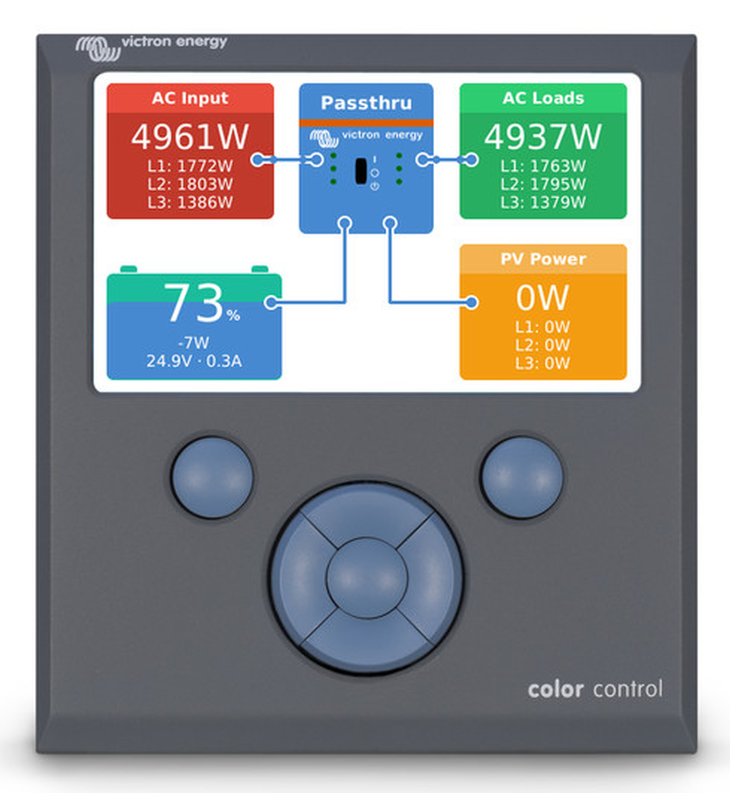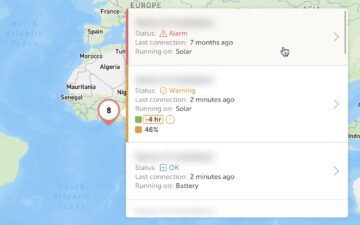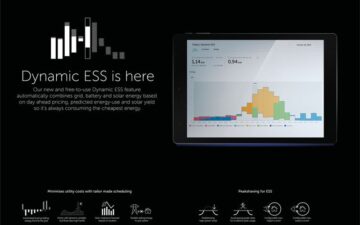
Good day,
Just now we released CCGX v2.03. This update fixes an issue with a (too) short absorption time for lead batteries. Note that this is really only for lead batteries. The issue does not apply to lithium batteries.
The problem occurs when the charge type in VEConfigure is set to ‘Adaptive’, or ‘Adaptive + Battery Safe’. The latter is the default setting for lead batteries: GEL, AGM, OPzV, OPzS and Traction. Systems configured for Lithium batteries are not affected as then the charge type is set to a fixed absorption time.
The problem was introduced in CCGX firmware version v2.00.
What must be done?
In systems where the CCGX has already been upgraded to v2.00 or later, I recommend you to update it to v2.03. This includes all ESS systems, by definition.
Systems that still have their CCGX running on v1.74 or earlier do not need to be updated. Unless running a Hub-1 Assistant, policy 1 and 3, that is. See below, system type C and D for details on that.
Details of affected systems
System type A (BMV & CCGX v2.00 or later)
- Multi/Quattro version 402 up to and including 413
- Charge curve set to ‘Adaptive’ or ‘Adaptive + Battery Safe’
- CCGX v2.00, v2.01 or v2.02
- BMV or a Lynx Shunt VE.Can
In systems with all four of the above components, the too-short absorption time occurs whilst charging from mains, genset or with a grid-tie PV Inverter. And, only for ESS systems, the MPPT Solar charger absorption time is also too short.
Solution: update CCGX to v2.03
System type B (no BMV, CCGX v2.00 or later, ESS Optimize mode, and only MPPTs: no grid-tie PV Inverters)
- Multi/Quattro version 402 up to and including 413
- Charge curve set to ‘Adaptive’ or ‘Adaptive + Battery Safe’
- ESS, running in Optimize mode, either with or without BatteryLife enabled
- CCGX v2.00, v2.01 or v2.02
- MPPT solar chargers
In systems with those five properties, and no BMV installed, nor any grid-tie PV Inverters, the too-short absorption time occurs as well. Also the MPPT Solar charger absorption time will be too short.
Solution: update CCGX to v2.03
System type C (Hub-1 Assistant with CCGX)
- Multi/Quattro, any firmware version
- Charge curve set to ‘Adaptive’ or ‘Adaptive + Battery Safe’
- Running Hub-1 Assistant set to policy ‘1. Connected to mains, feedback’ or ‘3. Disconnect from the mains when possible’.
- MPPT Solar charger (either VE.Can or VE.Direct MPPTs)
- CCGX with any firmware version (v1.74 or earlier, or v2.00 or later)
Solution: Update to CCGX v2.03, and make sure the Multi or Quattro firmware version is 402 or higher.
System type D (Hub-1 Assistant without CCGX)
- Multi/Quattro, any firmware version
- Charge curve set to ‘Adaptive’ or ‘Adaptive + Battery Safe’
- Running Hub-1 Assistant set to policy ‘1. Connected to mains, feedback’ or ‘3. Disconnect from the mains when possible’.
- MPPT Solar charger (either VE.Can or VE.Direct MPPTs)
- No CCGX
Solution: Set the charge curve, in VEConfigure, to ‘Fixed’ instead of ‘Adaptive’ (default). Or; add a CCGX to the system, updated to v2.03 and make sure the Multi or Quattro firmware version is 402 or higher.
More changes
Besides that described above, there are a few more changes:
- Fix bug for systems with a canbus-bms lithium battery: BYD B-Box, LG Resu, et cetera. With a full battery, the MPPT was too limited, to the point of being disabled entirely. As a result, all loads were powered from the mains, and no power sold back to the grid. This bug was introduced in v2.02. Note that there still is a similar bug, relating to ESS mode ‘Keep batteries charged’. Which we’ll fix as soon as possible in a later release.
- Add 15K Quattro and MultiGrid product names
How to update the CCGX?
To update a CCGX that is already running v2.00, see the update instructions. Most of those systems will automatically update themselves during the night.
To update a CCGX still running v1.74 or earlier, you need to -manually- upgrade it. See the upgrade to v2 instructions.
Conclusion
Many thanks to Martin G. for helping me get to the bottom of this problem. You are welcome to leave Disqus comments below.
Have a good day, Matthijs


















 #victronenergy #adventure
#victronenergy #adventure
 ELECTRICS
ELECTRICS 
